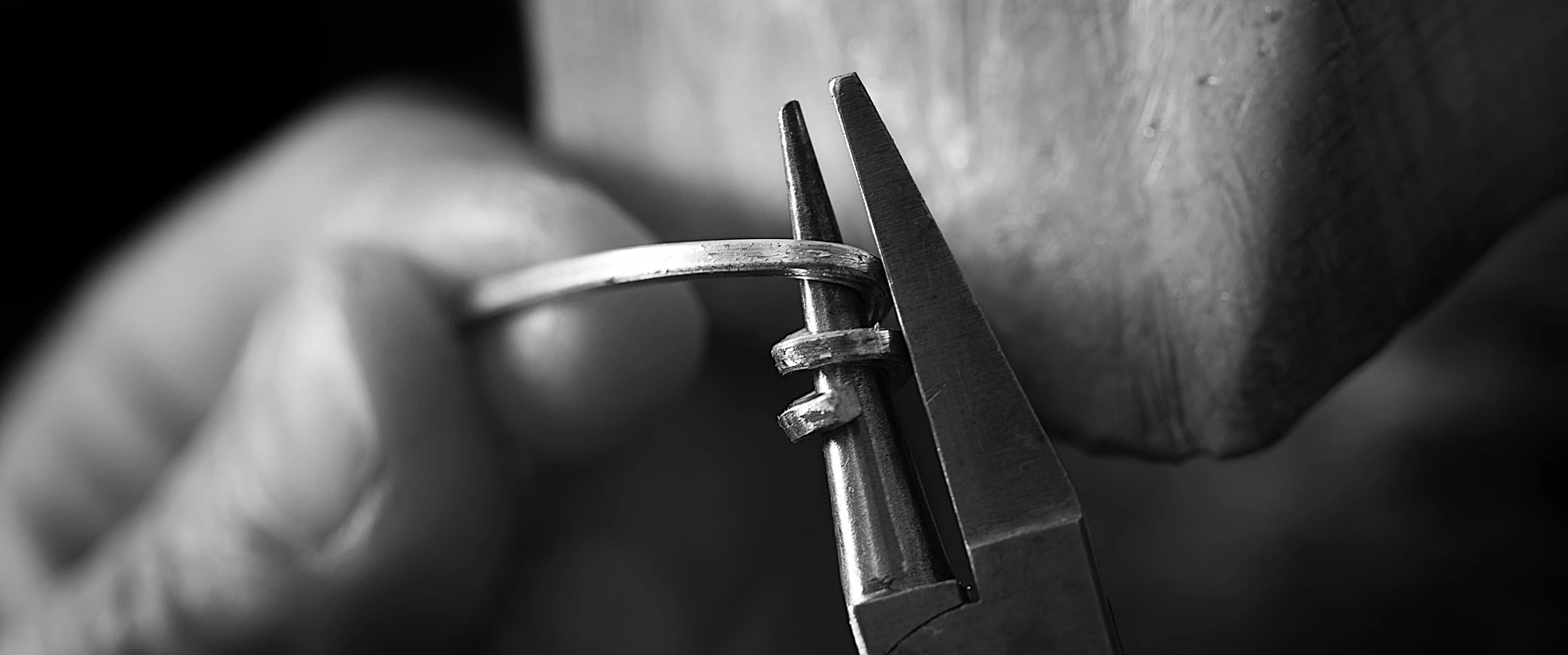
The integrity of each creation depends fundamentally on the raw materials - understanding the properties of the materials, and the way in which they behave is key to good craftsmanship.
Making anything necessarily involves using some of the Earth's precious resources. In my workshop, I'm committed to minimising materials used, and to ethical sourcing of materials in all respects:
Pure silver is a very soft metal, so almost all jewellery pieces are made from an alloy of silver mixed with a copper, which makes the silver harder and more resistant to wear. There are many different grades of silver alloy, with varying amounts of silver content.
Monkhaven pieces are crafted in Sterling Silver, which is a specific grade of silver used in Britain for centuries.
Sterling Silver is a high-grade silver alloy containing 92.5% silver, hence the alternative name "925 silver". Other grades, especially those labelled "continental silver", "Burmese silver", etc. usually contain much less silver, often as low as 80% or even less.
Since the intrinsic value of silver jewellery depends on its silver content, it is important to be confident of the grade when buying. All Monkhaven silver items are hallmarked, guaranteeing the correct silver content. For more details on hallmarking please see our "Hallmarking" page.
All silver used in Monkhaven jewellery is recycled metal from trusted sources.
Stones have traditional been used in jewellery around the world for thousands of years, and their careful use can dramatically enhance the appeal (and the value!) of jewellery.
There are only four "Precious" stones: emerald, ruby, sapphire, and diamond. These often command high prices that can reach into the millions, and can be out of reach for many, but there are hundreds of beautiful "Semi-precious" stones in a wonderful variety of colours, shapes and sizes, that are much more affordable and can be used to create stunning jewellery.
All stones used in Monkhaven designs are sourced exclusively from certified, ethical, sources.
The term "enamel" is a very loosely-defined term that can mean anything from certain types of paint, to the most breathtakingly exquisite enamel on the finest Fabergé eggs! Generally, it means some kind of coating applied to metal to produce a hard, usually glossy, surface.
In jewellery, traditional enamel is a coating of finely powdered glass applied to the surface of the metal, and then heated in a furnace to around 850°C until it fuses into a continuous glass layer. This means it cannot be used on items that have soldered joints, as the sold will melt and the pieces will fall apart. Also, this type of enamel can be quite fragile, and if it becomes chipped or cracked it is usually impossible to repair.
Other types of jewellery enamel are possible, and in recent years "cold enamels" have become popular. These are various types of resin that can be mixed like artist's paint in different colours and then applied as a liquid to the metal surface. The liquid resin slowly sets (or "cures"), often over a period of days, into a hard-wearing glossy surface. Pieces with multiple areas of cold enamelling can take days to create.
Monkhaven designs use both types of enamel. The type used on each particular piece is shown in the description, and on the Maker's Certificate you receive with each piece.